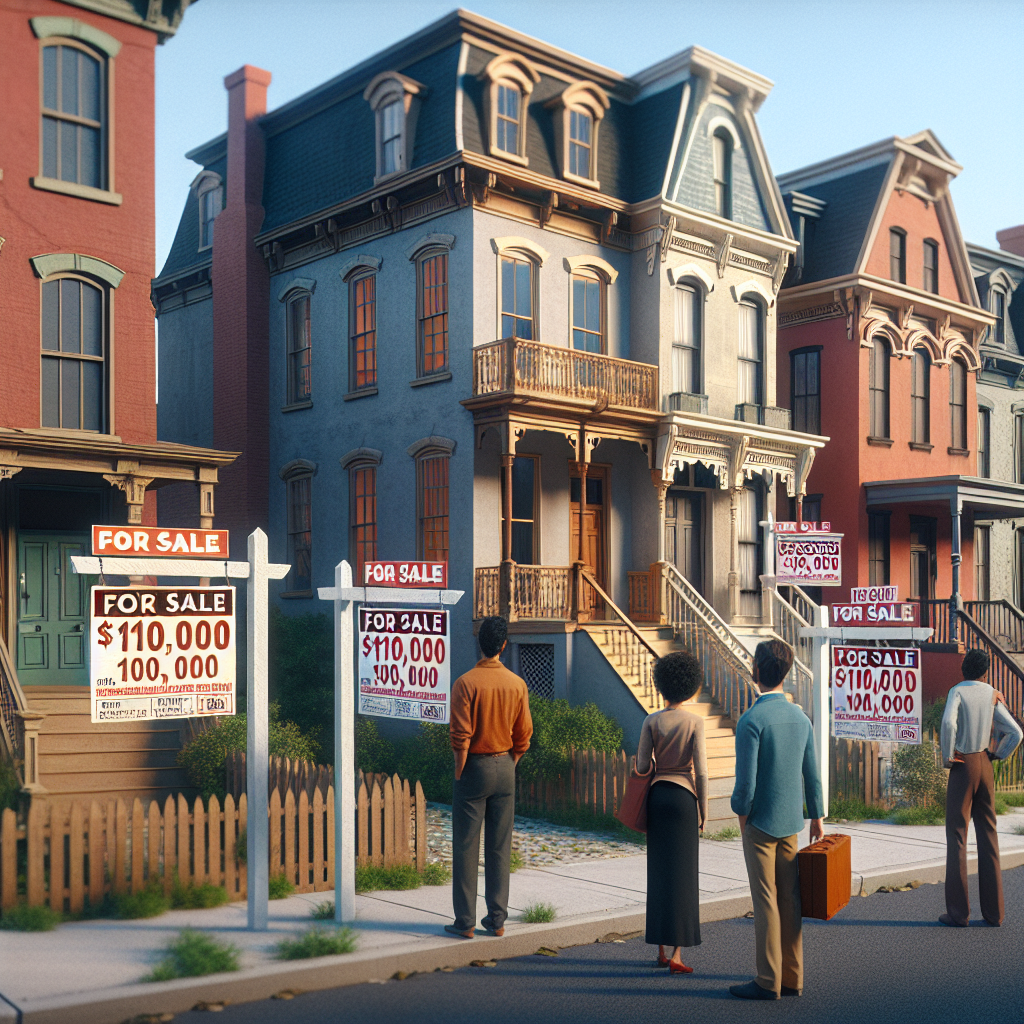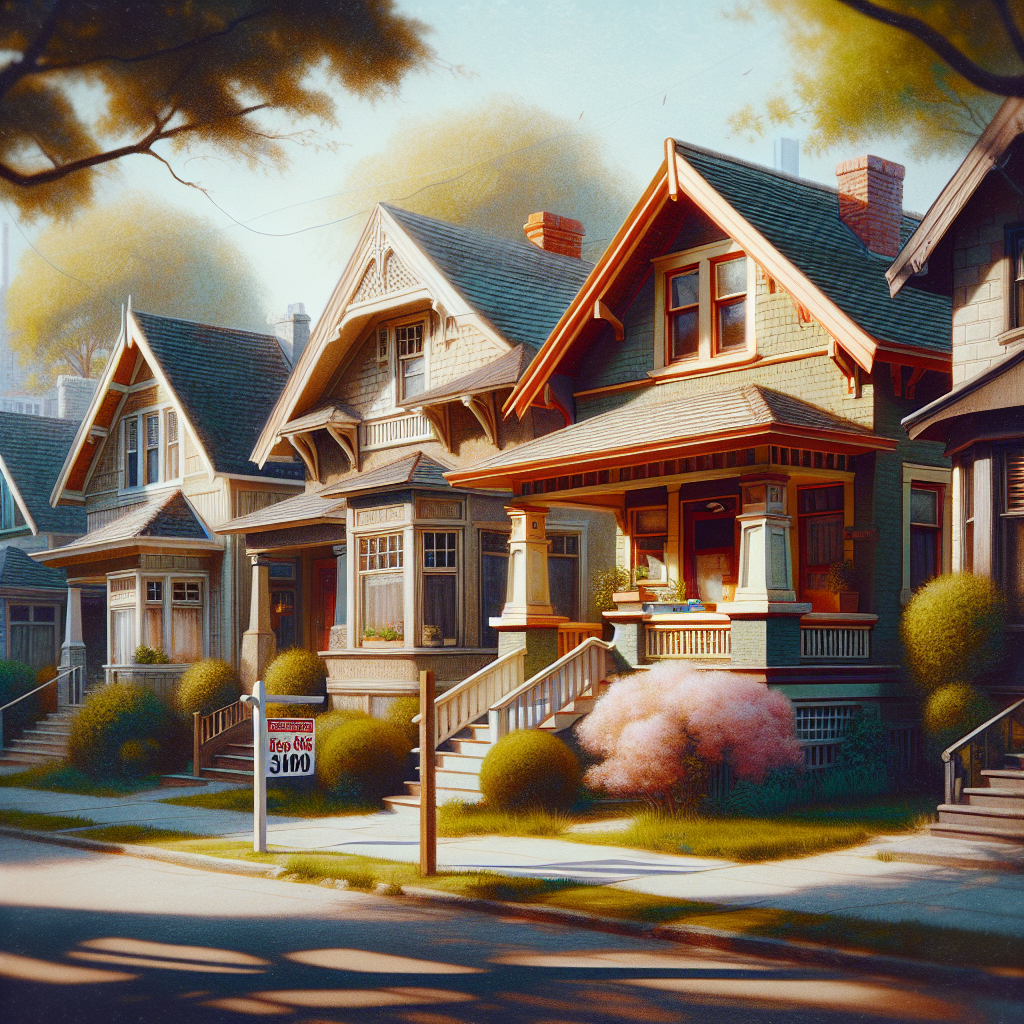-
Table of Contents
- Affordable Vintage Homes: Snagging Fixer-Uppers for $100K
- Why Choose a Vintage Home?
- Finding Affordable Vintage Homes
- 1. Explore Smaller Towns and Rural Areas
- 2. Work with a Real Estate Agent
- 3. Attend Estate Sales and Auctions
- 4. Network with Local Investors
- Case Studies: Success Stories of Affordable Vintage Homes
- Case Study 1: The Smith Family’s 1920s Bungalow
- Case Study 2: Jane Doe’s Victorian Fixer-Upper
- Renovating a Vintage Home: Tips and Considerations
- 1. Assess the Condition
- 2. Prioritize Essential Repairs
- 3. Preserve Original Features
- 4. Budget Wisely
- 5. Hire Experienced Contractors
- Financing Your Vintage Home Purchase and Renovation
- 1. FHA 203(k) Loan
- 2. Home Equity Loan or Line of Credit
- 3. Personal Loans
- 4. Grants and Tax Incentives
- The Risks and Rewards of Investing in Vintage Homes
- Risks
- Rewards
- Conclusion
Affordable Vintage Homes: Snagging Fixer-Uppers for $100K

In an era where real estate prices are skyrocketing, the dream of owning a home can seem out of reach for many. However, there is a niche market that offers a glimmer of hope: affordable vintage homes. These charming fixer-uppers, often priced around $100,000, provide an opportunity for homeownership that is both economical and rewarding. This article delves into the world of affordable vintage homes, offering insights, examples, and practical advice for those looking to invest in these hidden gems.
Why Choose a Vintage Home?
Vintage homes, typically built before the 1970s, offer a unique blend of character, history, and craftsmanship that is often missing in modern constructions. Here are some compelling reasons to consider a vintage home:
- Architectural Charm: Vintage homes often feature unique architectural details such as crown molding, hardwood floors, and intricate woodwork.
- Quality Materials: Older homes were often built with high-quality materials that have stood the test of time.
- Investment Potential: With the right renovations, vintage homes can significantly appreciate in value.
- Community and Location: Many vintage homes are located in established neighborhoods with mature trees and a strong sense of community.
Finding Affordable Vintage Homes
Locating a vintage home within the $100,000 price range requires diligence and a bit of luck. Here are some strategies to help you find these hidden treasures:
1. Explore Smaller Towns and Rural Areas
While major cities often have high real estate prices, smaller towns and rural areas can offer more affordable options. Websites like Zillow and Realtor.com allow you to filter searches by price and location, making it easier to find homes that fit your budget.
2. Work with a Real Estate Agent
A real estate agent with experience in vintage homes can be an invaluable resource. They can provide insights into local markets, identify potential properties, and negotiate on your behalf.
3. Attend Estate Sales and Auctions
Estate sales and auctions can be a goldmine for finding affordable vintage homes. These events often feature properties that need some work but are priced to sell quickly.
4. Network with Local Investors
Connecting with local real estate investors can provide leads on properties that are not yet listed on the market. Investors often have a network of contacts and can offer valuable advice on finding and renovating vintage homes.
Case Studies: Success Stories of Affordable Vintage Homes
To illustrate the potential of affordable vintage homes, let’s look at a few success stories:
Case Study 1: The Smith Family’s 1920s Bungalow
The Smith family purchased a 1920s bungalow in a small Midwestern town for $95,000. The home needed significant updates, including new plumbing, electrical work, and a roof replacement. With a renovation budget of $50,000, they transformed the property into a charming, modern home while preserving its original character. After the renovations, the home’s value increased to $180,000, providing the Smiths with substantial equity.
Case Study 2: Jane Doe’s Victorian Fixer-Upper
Jane Doe, a single professional, bought a Victorian fixer-upper in a historic district for $85,000. She invested $40,000 in renovations, focusing on restoring the home’s original features, such as stained glass windows and hardwood floors. Jane’s attention to detail paid off, as the home’s value soared to $200,000. Additionally, she received a historic preservation grant that covered part of the renovation costs.
Renovating a Vintage Home: Tips and Considerations
Renovating a vintage home can be a rewarding but challenging endeavor. Here are some tips to help you navigate the process:
1. Assess the Condition
Before purchasing a vintage home, conduct a thorough inspection to identify any structural issues, such as foundation problems, roof damage, or outdated electrical systems. Understanding the home’s condition will help you budget for necessary repairs.
2. Prioritize Essential Repairs
Focus on essential repairs first, such as fixing structural issues, updating plumbing and electrical systems, and addressing any safety concerns. Once these critical repairs are complete, you can move on to cosmetic updates.
3. Preserve Original Features
One of the main appeals of vintage homes is their unique architectural details. Whenever possible, preserve original features such as hardwood floors, moldings, and built-in cabinetry. These elements add character and value to the home.
4. Budget Wisely
Renovations can quickly become expensive, so it’s essential to create a realistic budget and stick to it. Allocate funds for unexpected expenses, as older homes often have hidden issues that arise during renovations.
5. Hire Experienced Contractors
Work with contractors who have experience with vintage homes. They will understand the unique challenges and requirements of renovating older properties and can help ensure the work is done correctly.
Financing Your Vintage Home Purchase and Renovation
Financing a vintage home purchase and renovation can be more complex than buying a move-in-ready property. Here are some financing options to consider:
1. FHA 203(k) Loan
The Federal Housing Administration (FHA) offers 203(k) loans, which combine the cost of purchasing a home with the cost of renovations. This loan is ideal for buyers looking to purchase a fixer-upper and make necessary repairs.
2. Home Equity Loan or Line of Credit
If you already own a home and have built up equity, you can use a home equity loan or line of credit to finance the purchase and renovation of a vintage home. This option allows you to borrow against the equity in your current home.
3. Personal Loans
Personal loans can be used to finance home renovations, but they typically come with higher interest rates than mortgage loans. This option may be suitable for smaller renovation projects.
4. Grants and Tax Incentives
Some local governments and historic preservation organizations offer grants and tax incentives for renovating historic homes. Research available programs in your area to see if you qualify for financial assistance.
The Risks and Rewards of Investing in Vintage Homes
Investing in vintage homes comes with its own set of risks and rewards. Understanding these can help you make an informed decision:
Risks
- Unexpected Costs: Renovating an older home can uncover hidden issues that require costly repairs.
- Time-Consuming: Renovations can take longer than expected, especially if you encounter unforeseen problems.
- Financing Challenges: Securing financing for a fixer-upper can be more complicated than for a move-in-ready home.
Rewards
- Increased Property Value: With the right renovations, vintage homes can appreciate significantly in value.
- Unique Character: Vintage homes offer unique architectural details and charm that are hard to find in modern constructions.
- Personal Satisfaction: Successfully renovating a vintage home can be a highly rewarding experience, both personally and financially.
Conclusion
Affordable vintage homes offer a unique opportunity for homeownership that combines charm, history, and investment potential. By exploring smaller towns, working with experienced real estate agents, and attending estate sales, you can find hidden gems within the $100,000 price range. Renovating these homes requires careful planning, budgeting, and a focus on preserving original features. With the right approach, you can transform a fixer-upper into a beautiful, valuable property. While there are risks involved, the rewards of owning a vintage home can be substantial, making it a worthwhile endeavor for those willing to put in the effort.
In summary, affordable vintage homes provide a viable path to homeownership for those willing to take on the challenge of renovation. By understanding the market, leveraging financing options, and carefully planning your renovations, you can turn a fixer-upper into your dream home while building equity and preserving a piece of history.








